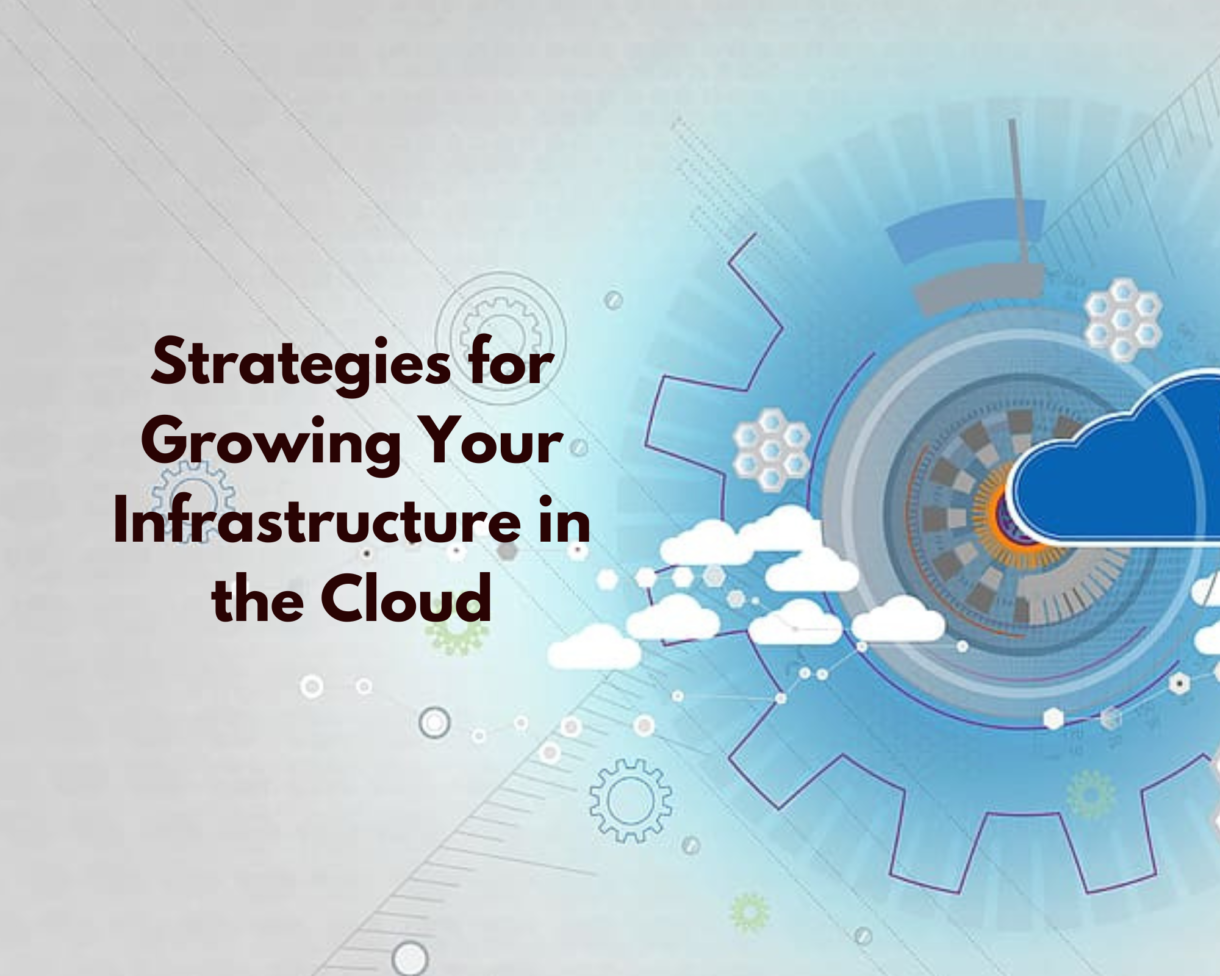In today’s digital landscape, businesses are increasingly turning to the cloud to support their infrastructure needs. The scalability and flexibility offered by cloud computing have revolutionized the way organizations build and manage their IT systems. However, scaling infrastructure in the cloud requires careful planning and execution to ensure optimal performance and cost-effectiveness. In this article, we will explore the art of scaling and discuss strategies that can help you effectively grow your infrastructure in the cloud.
Cloud Infrastructure Scaling Strategies
Scaling your infrastructure in the cloud involves expanding your computing resources to accommodate growing demands. It allows you to adjust your infrastructure dynamically based on usage patterns, ensuring that your applications and services remain highly available and performant. However, scaling effectively requires a strategic approach and careful consideration of various factors and strategies.

Understanding Cloud Infrastructure Scaling
Cloud infrastructure scaling involves adding or removing resources to match the changing demands of your applications. It can be done horizontally, by adding more instances, or vertically, by increasing the capacity of existing instances. Scalability is a core characteristic of cloud computing and is essential for meeting the needs of a growing business.
Evaluating Your Cloud Infrastructure Needs
Before scaling your infrastructure, it’s crucial to assess your current and future requirements. Consider factors such as expected user traffic, data storage needs, and application performance goals. By understanding your infrastructure needs, you can make informed decisions about the resources required for scaling.
Choosing the Right Cloud Provider
Selecting the right cloud provider is a critical step in scaling your cloud infrastructure. Evaluate factors like service reliability, scalability features, pricing models, and customer support. Popular cloud providers like Amazon Web Services (AWS), Microsoft Azure, and Google Cloud Platform offer a wide range of services and tools to support scalable infrastructure.
Designing for Scalability
Designing your applications and architecture for scalability is essential for effective scaling in the cloud. Utilize modular and loosely coupled components that can be easily replicated and distributed. Implement horizontal scaling patterns like the use of microservices and containerization. By designing scalability from the outset, you can minimize future challenges during the scaling process.
Automating Infrastructure Management
Automation plays a crucial role in managing and scaling your cloud infrastructure. Use infrastructure-as-code (IaC) tools like AWS CloudFormation or Terraform to define and provision resources programmatically. Automation enables quick and consistent deployments, reduces the risk of manual errors, and simplifies infrastructure management as your system grows.
Implementing Load Balancing
Load balancing is a key technique for distributing incoming traffic across multiple instances or servers. It improves application performance and ensures high availability by preventing any single component from becoming a bottleneck. Utilize load balancing services provided by your cloud provider, such as Elastic Load Balancing (ELB) on AWS or Application Gateway on Azure.
Utilizing Serverless Computing
Serverless computing is a paradigm where you focus on writing and deploying code without worrying about the underlying infrastructure. It enables automatic scaling and resource allocation based on demand, making it an excellent choice for highly scalable applications. Services like AWS Lambda and Azure Functions allow you to run code in response to events, paying only for the actual execution time.
Monitoring and Optimization
Continuous monitoring of your cloud infrastructure is crucial for identifying bottlenecks, optimizing resource allocation, and ensuring optimal performance. Utilize monitoring tools provided by your cloud provider, such as AWS CloudWatch or Azure Monitor, to gather metrics and insights about your infrastructure. Use this data to make informed decisions about scaling and resource optimization.
Disaster Recovery and High Availability
Maintaining high availability and implementing disaster recovery strategies are vital for scalable infrastructure. Design your architecture across multiple availability zones to ensure fault tolerance and minimize downtime. Implement automated backup and recovery mechanisms, such as regular snapshots and database replication, to protect your data and applications from failures.
Security Considerations
As you scale your cloud infrastructure, it’s essential to prioritize security. Implement robust access controls, network security groups, and encryption mechanisms to protect your data and applications. Regularly perform security audits and stay updated with the latest security best practices to mitigate potential risks and vulnerabilities.
Cost Optimization
Scaling your cloud infrastructure can lead to increased costs if not managed efficiently. Optimize your resource allocation by rightsizing instances, utilizing reserved instances or savings plans, and leveraging cost optimization tools provided by your cloud provider. Regularly analyze your usage patterns and make adjustments to ensure cost-effectiveness while meeting your performance requirements.
Future-Proofing Your Infrastructure
Technology is constantly evolving, and it’s essential to future-proof your cloud infrastructure. Stay updated with the latest advancements in cloud computing, such as serverless architecture, containerization, and machine learning. Embrace new technologies and services that align with your business goals and can support your scaling needs in the long term.
Case Studies: Successful Scaling in the Cloud
Explore real-world case studies of organizations that have successfully scaled their cloud infrastructure. Learn from their experiences, challenges, and strategies to gain insights into effective scaling practices. Case studies provide valuable lessons and practical examples that can guide you in scaling your own infrastructure.
Also Read – Mastering The Art Of B2B Marketing – Tips For Success
Frequently Asked Questions (FAQs)
What is the difference between horizontal and vertical scaling?
Horizontal scaling involves adding more instances or servers to distribute the workload, while vertical scaling involves increasing the capacity of existing instances or servers.
Is scaling in the cloud more cost-effective than traditional on-premises infrastructure?
Cloud scaling offers cost advantages due to its pay-as-you-go model, eliminating the need for upfront hardware investments and allowing flexibility in resource allocation.
How does serverless computing help with scalability?
Serverless computing automatically scales your applications based on demand, allowing you to focus on writing code without worrying about infrastructure provisioning and management.
What are some common challenges in scaling infrastructure in the cloud?
Common challenges include ensuring seamless integration with existing systems, managing data consistency across distributed components, and optimizing costs while maintaining performance.
How often should I review and optimize my infrastructure scaling strategies?
Regularly reviewing and optimizing your infrastructure scaling strategies is recommended to adapt to changing business needs, technology advancements, and cost optimization opportunities.
Also Read – Cool AI Tools That Are Fun To Try Online
Conclusion
Scaling your cloud infrastructure is a critical aspect of modern business growth. By implementing effective strategies and leveraging the power of cloud computing, businesses can achieve seamless scalability, high availability, and optimal performance. The art of scaling requires careful evaluation of infrastructure needs, selecting the right cloud provider, designing for scalability, and embracing automation and monitoring. Additionally, incorporating DevOps practices can further enhance the scaling process. DevOps which combines development and operations, promotes collaboration, automation, and continuous improvement, allowing businesses to streamline their infrastructure management and deployment processes. By adopting a DevOps mindset, organizations can achieve faster and more efficient scaling, ensuring that their infrastructure keeps pace with evolving business demands. Scaling in the cloud with a DevOps approach empowers businesses to thrive in today’s rapidly changing digital landscape.



